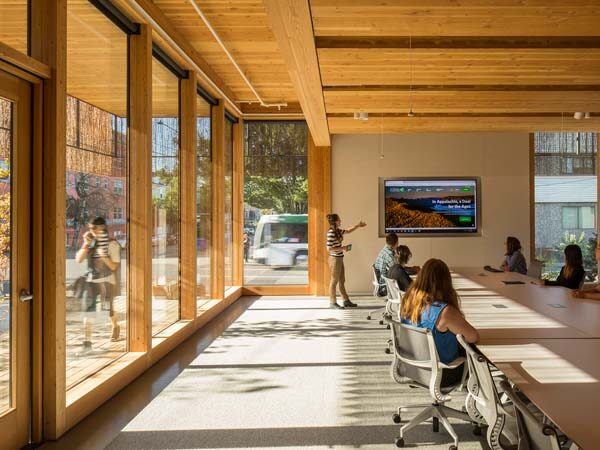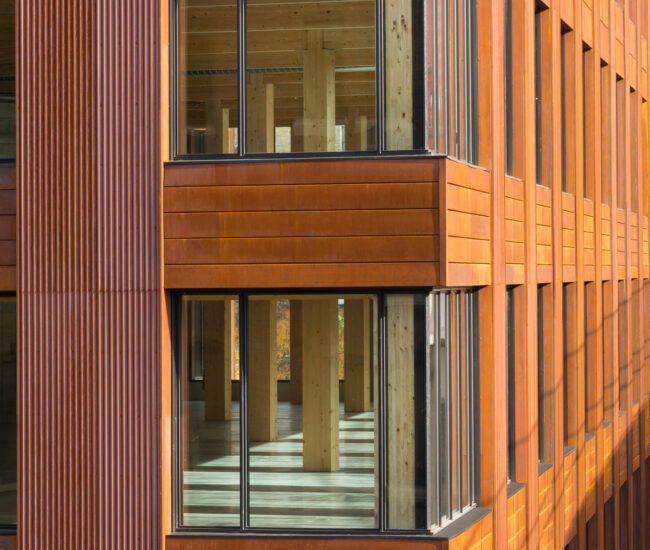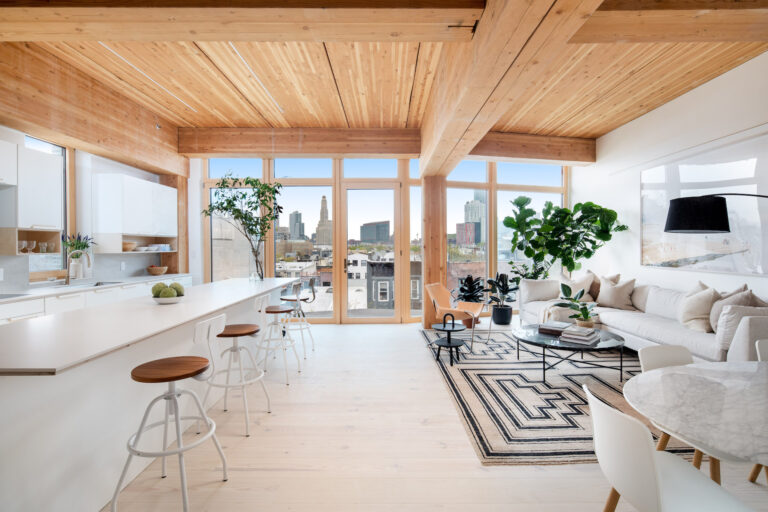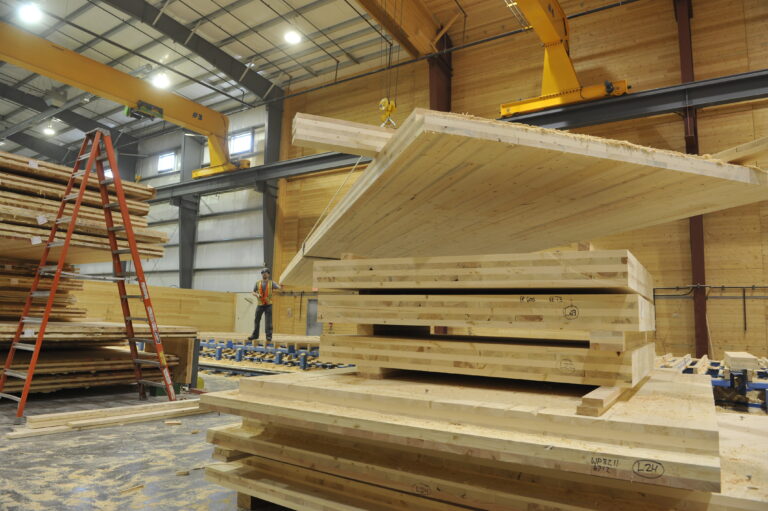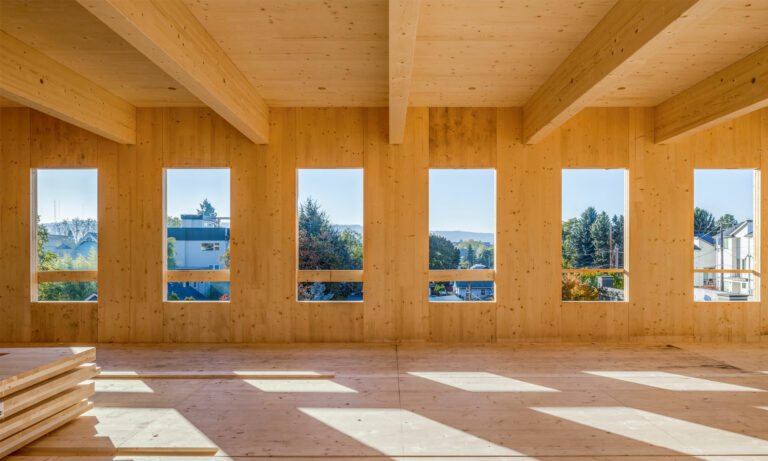The insurance challenge tends to present itself in two forms: builder’s risk insurance (or course of construction) and fixed property insurance (after the building is complete and occupied). Relative risks are assessed differently for each type of insurance, and each requires a unique approach. For example:
Builder’s Risk Insurance
Construction-phase risks associated with fire are different in mass timber buildings than with most other framing systems. Since the timber elements have inherent fire-resistance capabilities, a building has a certain level of fire-resistance as soon as the frame is erected. Protection doesn’t rely on (and wait for installation of) materials such as spray-applied fire proofing. The potential for faster construction can also mitigate several risks. Less time under construction means less time for potential hazards such as theft, arson, etc.
Fixed Property Insurance
In addition to safety, fixed property insurance for mass timber buildings requires an understanding of performance related to things like moisture, durability and building enclosure detailing. Much of the fixed property insurance discussion is also site-specific—e.g., Is the area prone to flooding, earthquakes or high winds? Mass timber has been rigorously tested against potential natural disasters as demonstrated in the test and research reports linked below.
